Pole Barns with Metal Trusses: A Complete Guide
When you think of a pole barn, you may think of a structure that has an entirely wooden frame, from the side frame to the roof trusses. While this is a very common style of pole barn, another popular style is pole barns constructed with metal trusses.
There are a number of reasons why you would choose pole barns with metal trusses. Both wood and metal trusses have their place, but in this article, we are focusing on metal trusses for pole barns specifically. We break down common metal truss styles, the benefits of metal trusses, and answer common questions about pole barns with metal trusses.
If you’re interested in checking out the pole barn models we sell, you can view our selection of pole barns, or design a pole barn with our 3D designer. If you’re ready to learn more about pole barns with metal trusses, keep on reading!
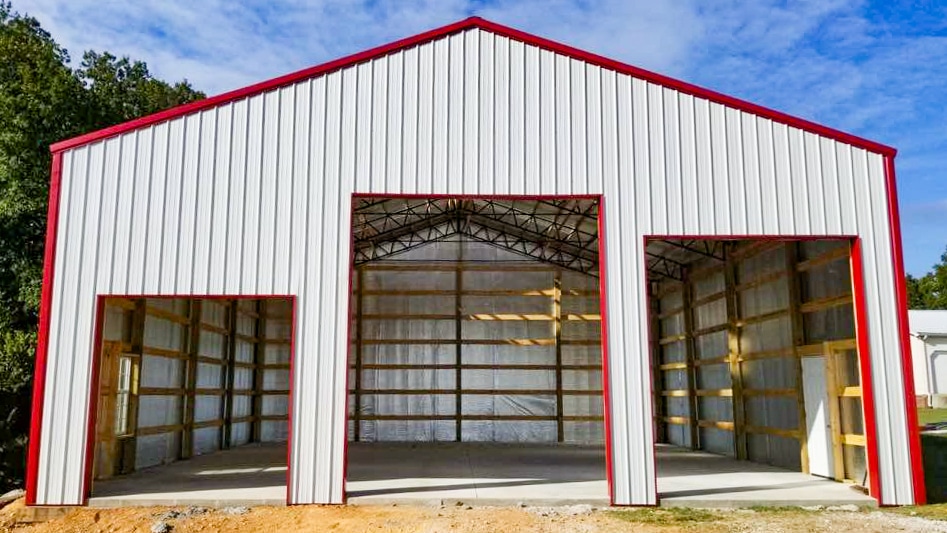
What Are Metal Trusses?
Metal trusses essentially provide the same function as wood trusses, but are designed in a slightly different way. Metal trusses use a combination of interconnected beams and bars arranged in a triangular pattern, allowing them to distribute weight evenly and span longer distances than wood trusses.
Metal trusses are used in a variety of applications, from warehouse construction to larger industrial projects, such as bridges, sports stadiums, and aircraft hangers. While there are a number of styles of metal trusses, there are 3 main styles used in pole barn construction.
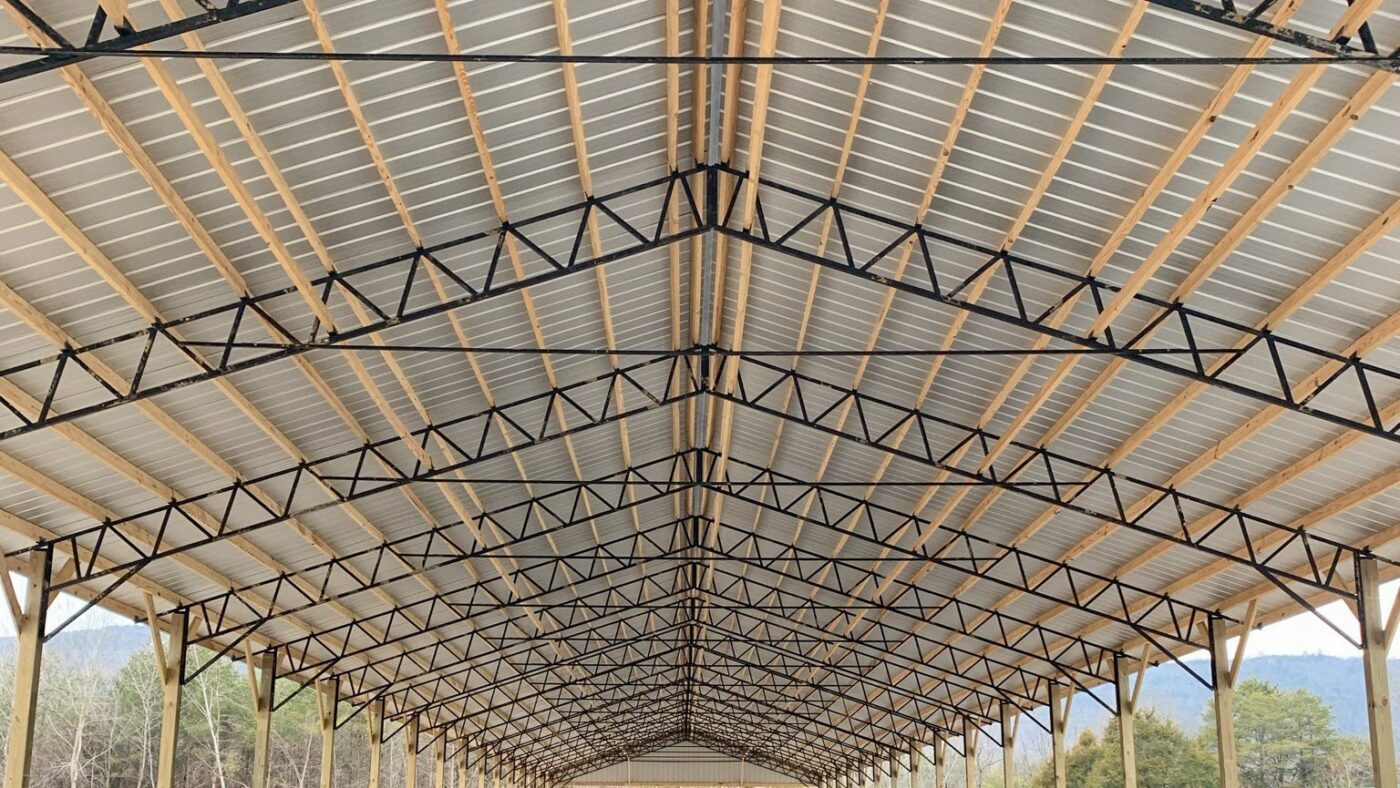
Metal Trusses in a Pole Barn: 3 Main Types
Gable Trusses
Gable trusses are the most common type of metal trusses in a pole barn. These trusses are constructed in an A-frame design, which gives a building the commonly seen peaked roof profile. Gable trusses can vary in size and pitch, depending on the use of the building
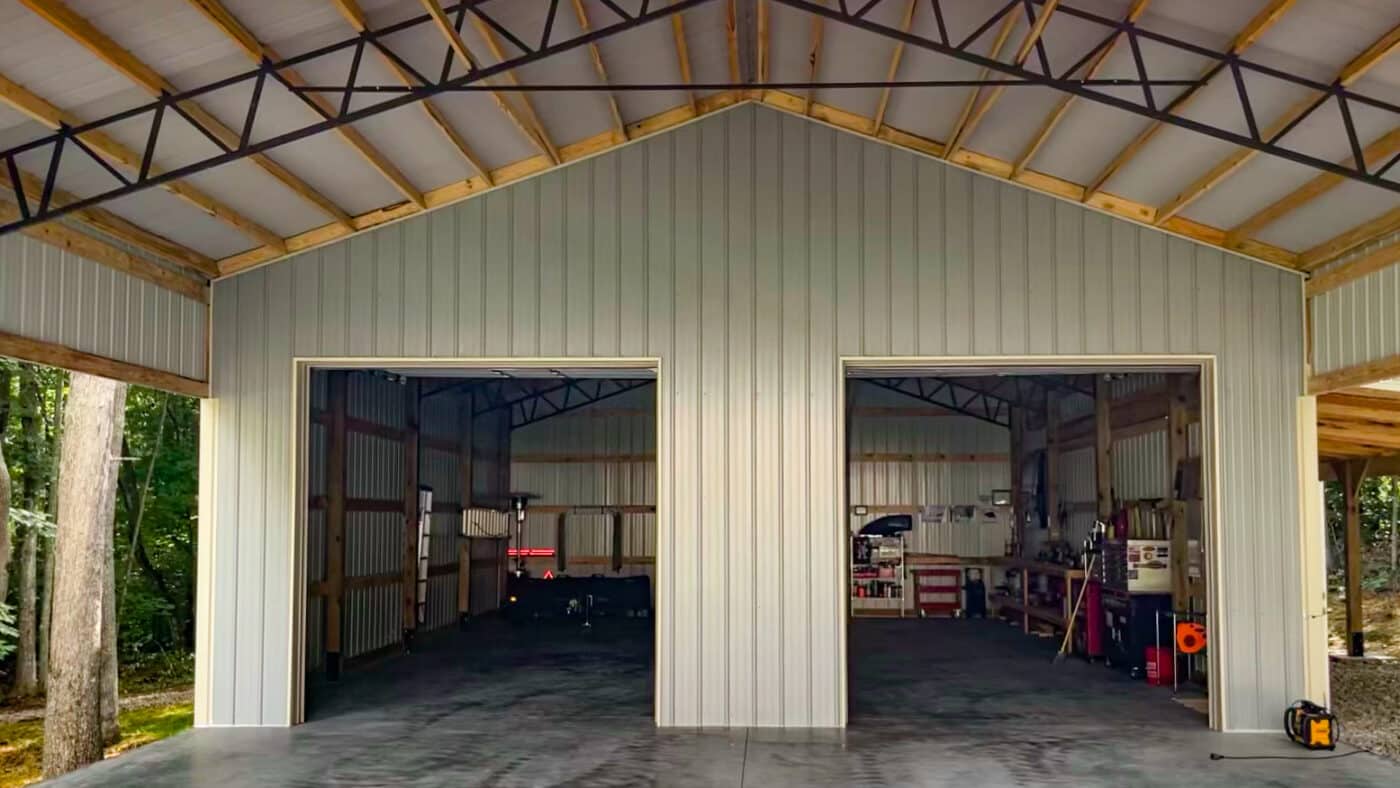
Lean-To Trusses
Lean-to trusses are made with a single-slope design, instead of an A-frame design. While it’s not as common to see these used in the construction of the main frame of pole barns with metal trusses, they are often used in porches and side buildings attached to pole buildings.
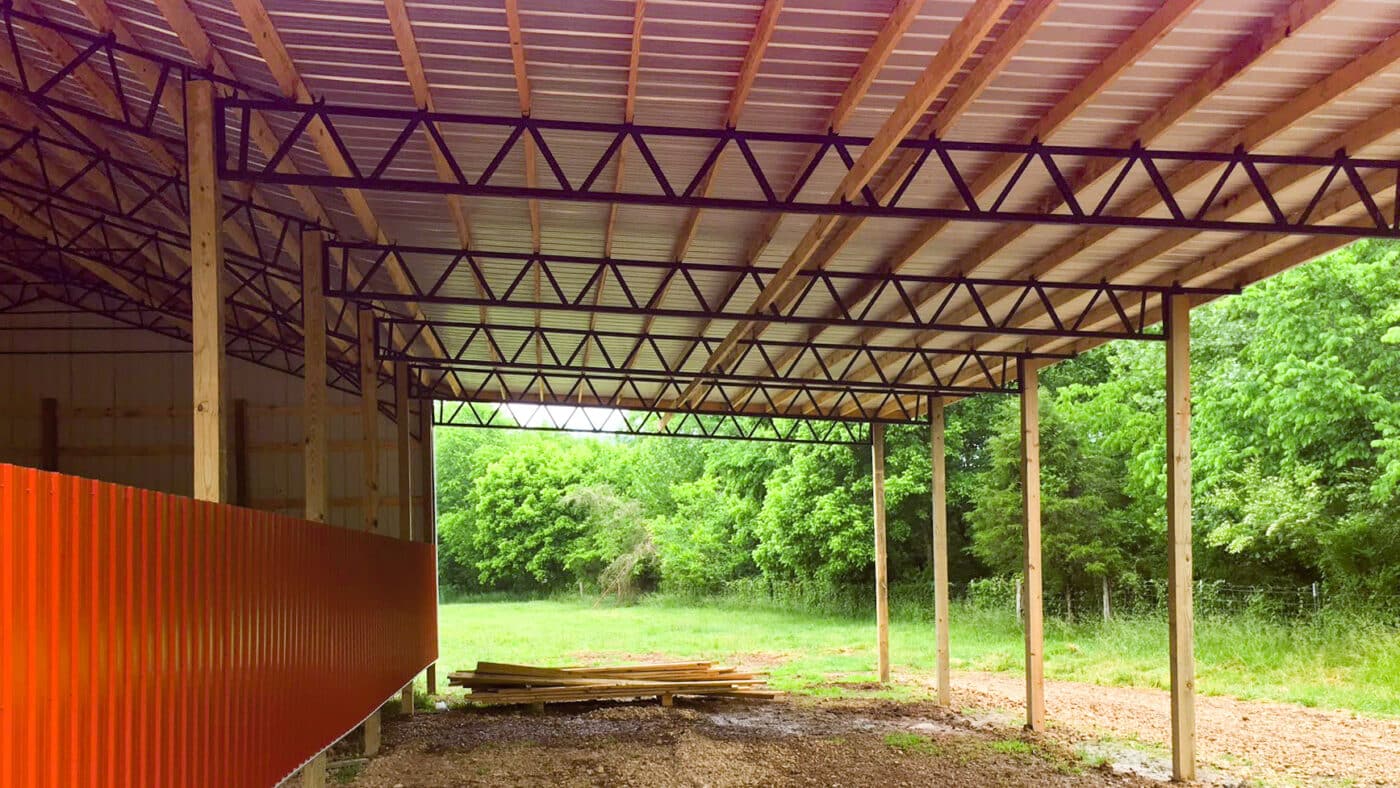
Header Trusses
Header trusses, also known as bar joists, are designed to span wide gaps in the sidewalls of pole buildings. These are especially useful in areas where a large opening is necessary, and supporting posts would obstruct the entrance. Metal bar joists, with their ability to span long distances, allow for wide, unobstructed access points into a pole barn.
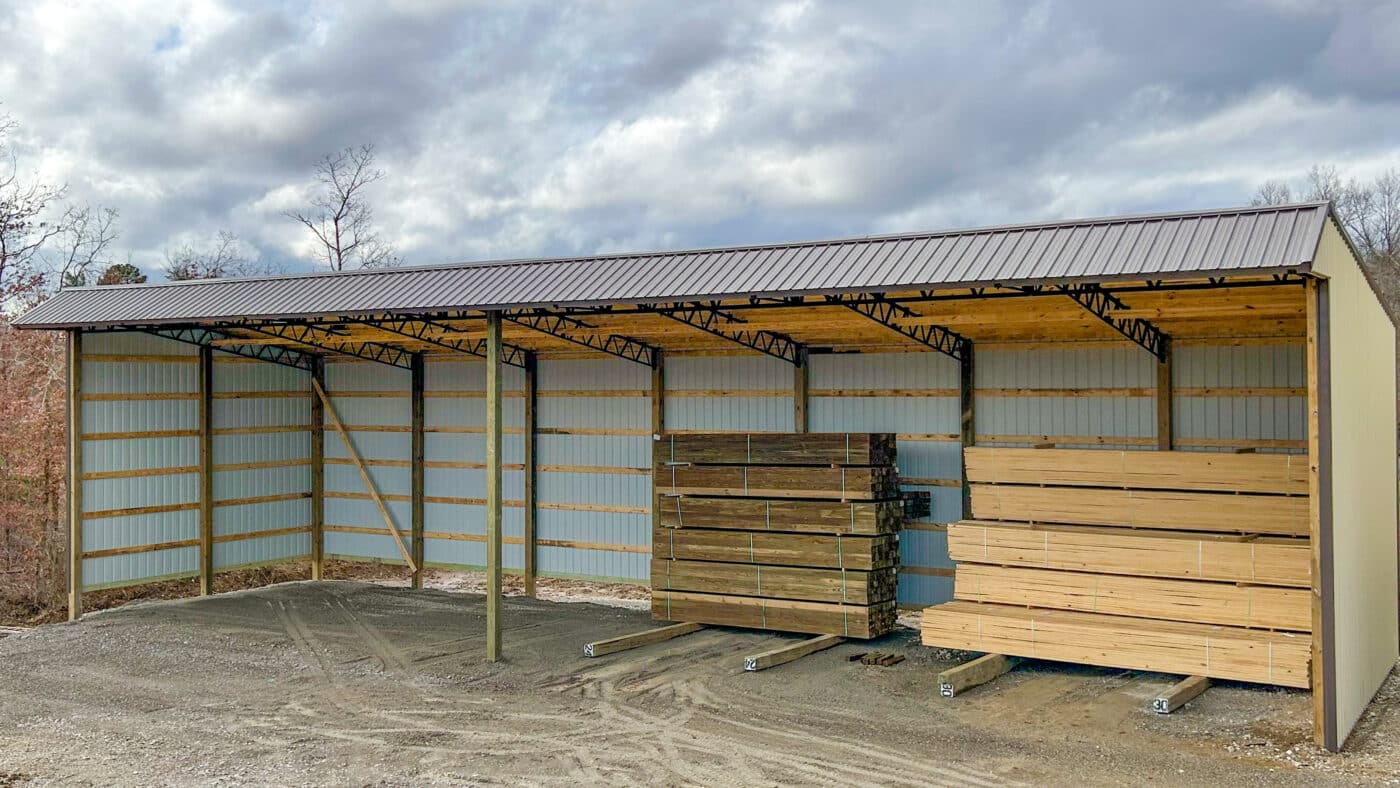
Benefits of Pole Barns With Metal Trusses
Building pole barns with metal trusses is becoming more and more common, and for good reason. There are several significant benefits of metal trusses in pole barns. Here are the top 5 benefits:
1. Strength and Durability
Metal trusses are known for their strength and durability, and withstand heavy loads and high-stress environments. They are not susceptible to rot or wood-boring pests, and are quite resistant to fires, especially when coated with a fire-retardent coating.
2. Long Unsupported Spans
The strong design of these trusses allows them to cross long spans with supporting posts, giving the building wide and unobstructed spaces. This benefit is a common reason metal trusses are chosen in pole barn construction, especially in larger buildings.
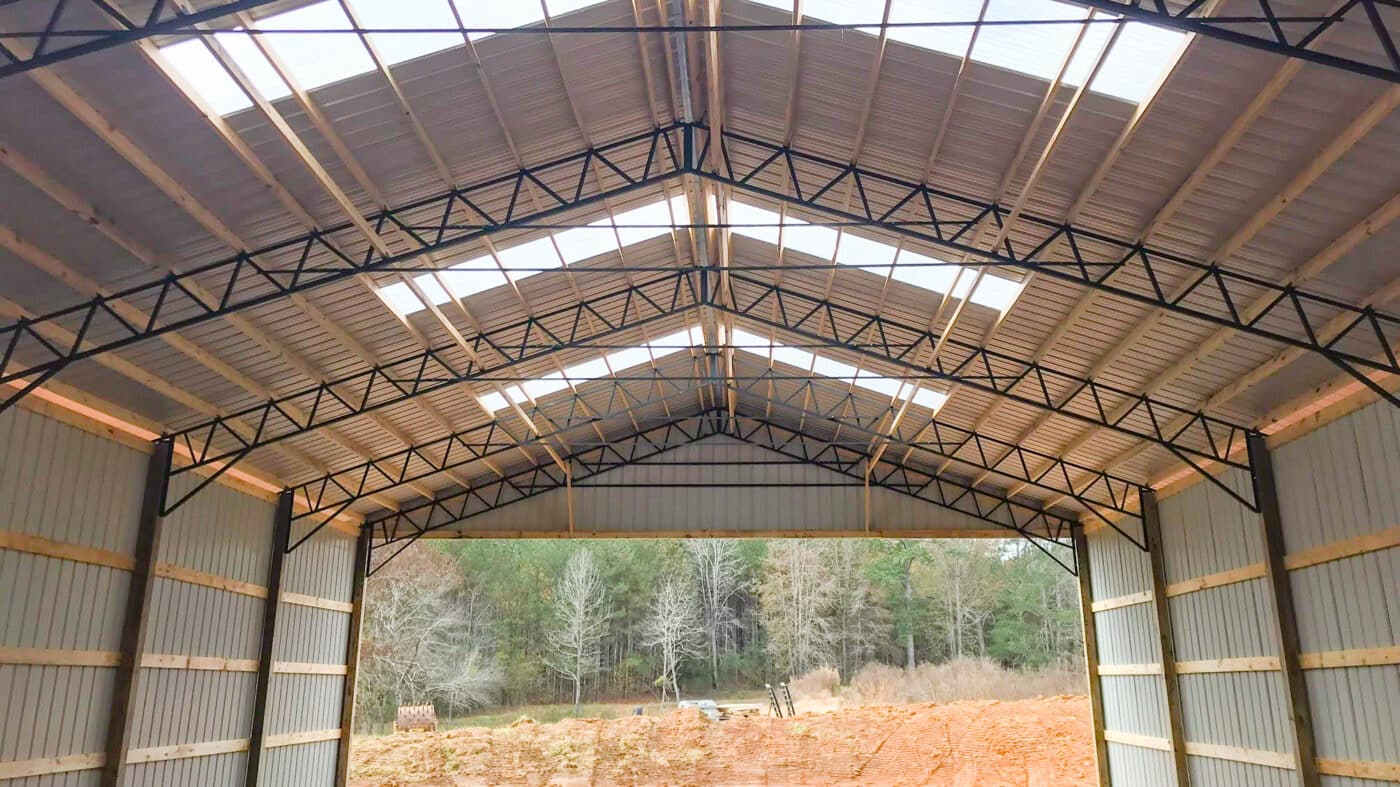
3. Quick Installation
Installing metal trusses is usually a relatively quick process, saving time and money on the overall construction of the building. Metal trusses are typically constructed offsite and transported to the construction site, also saving costs on onsite labor.
4. Light Overall Weight
The strength-to-weight ratio of metal trusses is unmatched. Not only does this allow the overall roof structure of the building to be lower, but it also allows for easier installation and transport to the building site.
5. Low Maintenance
Once installed, metal trusses require minimal maintenance, saving time and money over the lifespan of the building. In addition, metal trusses have fewer places for birds to nest, which helps to keep the floor and equipment inside the building cleaner.
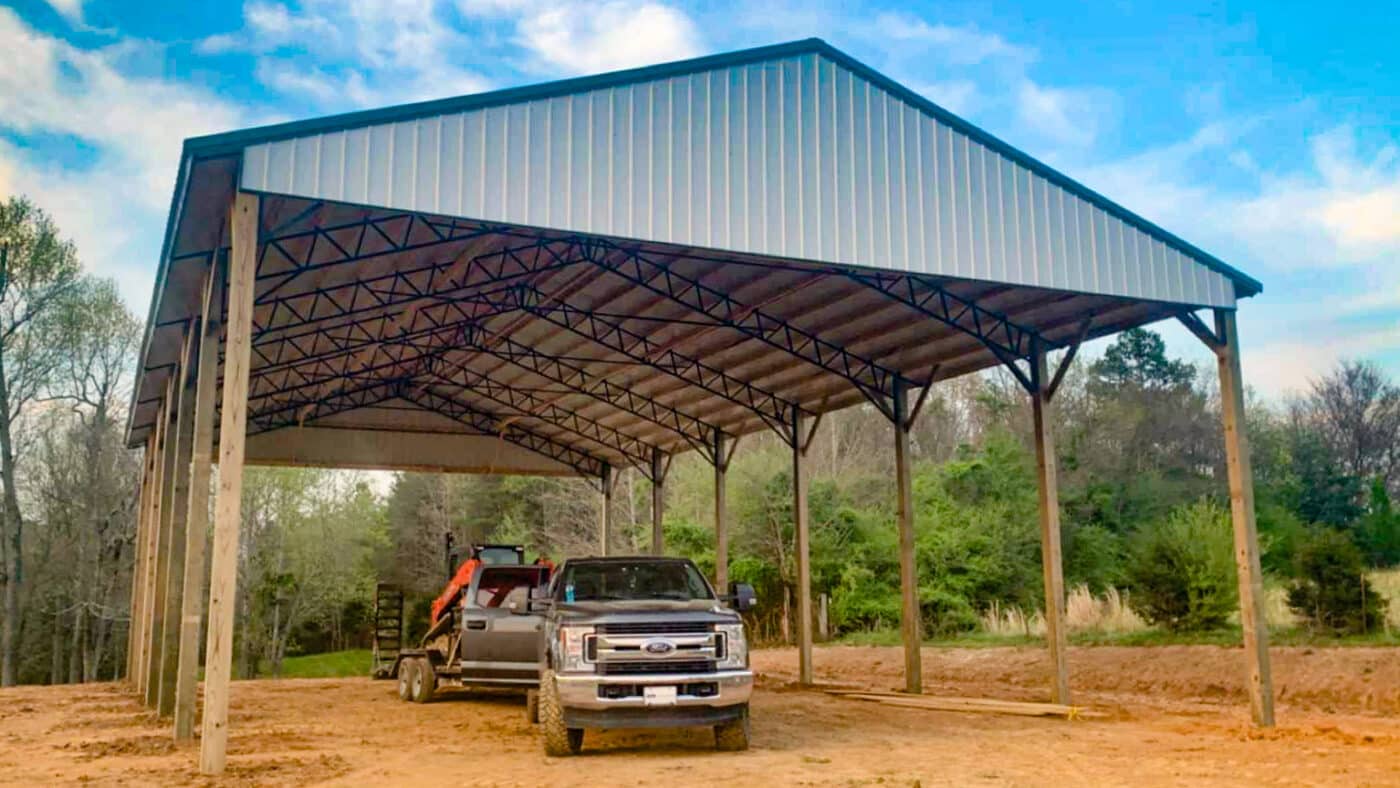
Pole Barns With Metal Trusses vs Wood Trusses: Which is Better?
The two main choices when it comes to pole barn trusses are wood and metal trusses. Both have their pros and cons, and the better choice depends on the specific application. Here’s a comparison between the two options:
| Metal Trusses | Wood Trusses | |
| Cost | Cost per truss is higher: roughly $600 per truss Often a more economical choice because: – lower labor costs involved – fewer trusses needed (1 metal truss for every 3 wood trusses is typical) | Cost per truss is lower: about $200 per truss Often more expensive because: – higher cost of installation – more material needed (more trusses, additional headers, etc.) |
| Longevity | Can last up to 200 years if kept dry and undamaged Not susceptible to wood boring pests | Also can last up to 200 years if undamaged and kept dry Lifespan can be shortened from bore bees and termites |
| Durability | Not susceptible to rot, termites, or bore bees More resistant to extreme weather like hurricanes, since the trusses attach directly to the post, instead of being nailed to a header | More susceptible to fire, rot, termites, and bore bees Can damage more quickly in extreme weather events |
| Strength | Can span long distances without support Capable of supporting heavy roof loads | Not as strong as metal trusses, and often needs more support from load-bearing walls or posts |
| Ceiling | Aren’t designed to attach a ceiling to the bottom of the truss Adding insulation to steel trusses can be harder More difficult to add things like lighting and wiring to a metal truss building | Designed for a ceiling to be attached to the bottom of the truss Easier to insulate than a metal trusses Easier to add lighting and electrical wiring |
| Aesthetic | Provides an industrial look preferred by some | Features a more rustic or ‘warm’ feel |
| Snow Load | Cost per truss makes it expensive to add more trusses for higher snow load rating Metal trusses are more popular in the south, where snow load isn’t an issue | More economical in areas with high snow load requirements, and more trusses are needed to meet requirements More popular in northern states, where snow load is a concern |
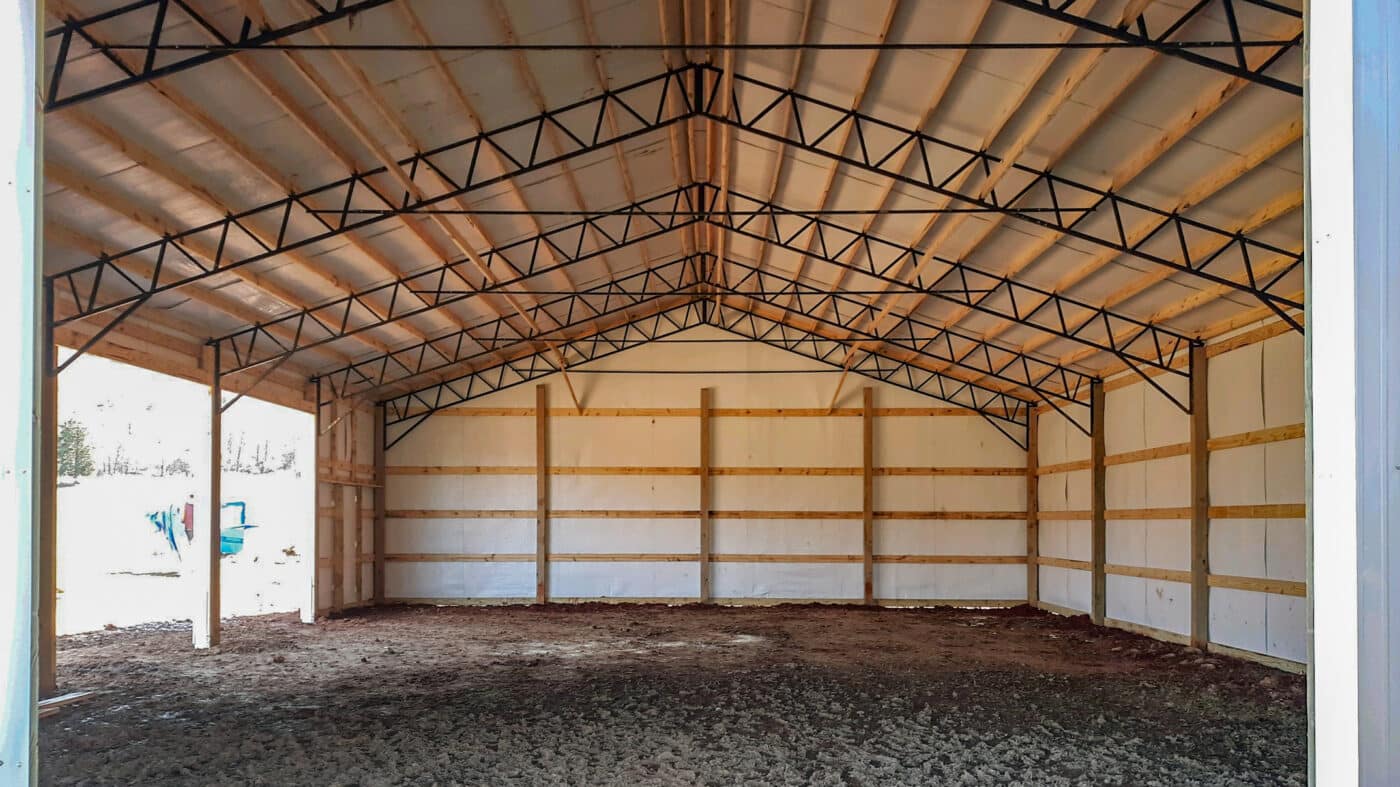
Are Metal Trusses Cheaper than Wood Trusses?
A building built with metal trusses is often cheaper than wood trusses since fewer trusses are required for a sturdy building. Steel trusses can cost around $600 a truss, compared to $200 for wood trusses. However, with less material and labor needed for metal truss installation, it’s actually more economical to build with metal trusses.
A pole barn with metal trusses can vary in price quite a bit, depending on the size and options selected. A pole barn with metal trusses usually costs somewhere between $12,000 and $60,000. For more information on the cost of pole barns, check out our article on the cost of pole barns in Tennessee.
How Far Apart Are Metal Trusses on a Pole Barn?
The spacing between metal trusses on a pole barn typically varies from 8’ spacing to 14’ spacing. Metal trusses are most commonly spaced 12’ apart, with purlins attached to the top of the trusses connecting them to each other. The roof is then fastened to the purlins, which helps to further strengthen the stability of the trusses.
What is the Maximum Span of a Metal Truss?
The maximum span of metal trusses in a pole building varies quite a bit, and can be anywhere from 16’ to 100’. Many pole buildings range from 40’ to 80’ wide, so the truss span will be roughly equivalent to that.
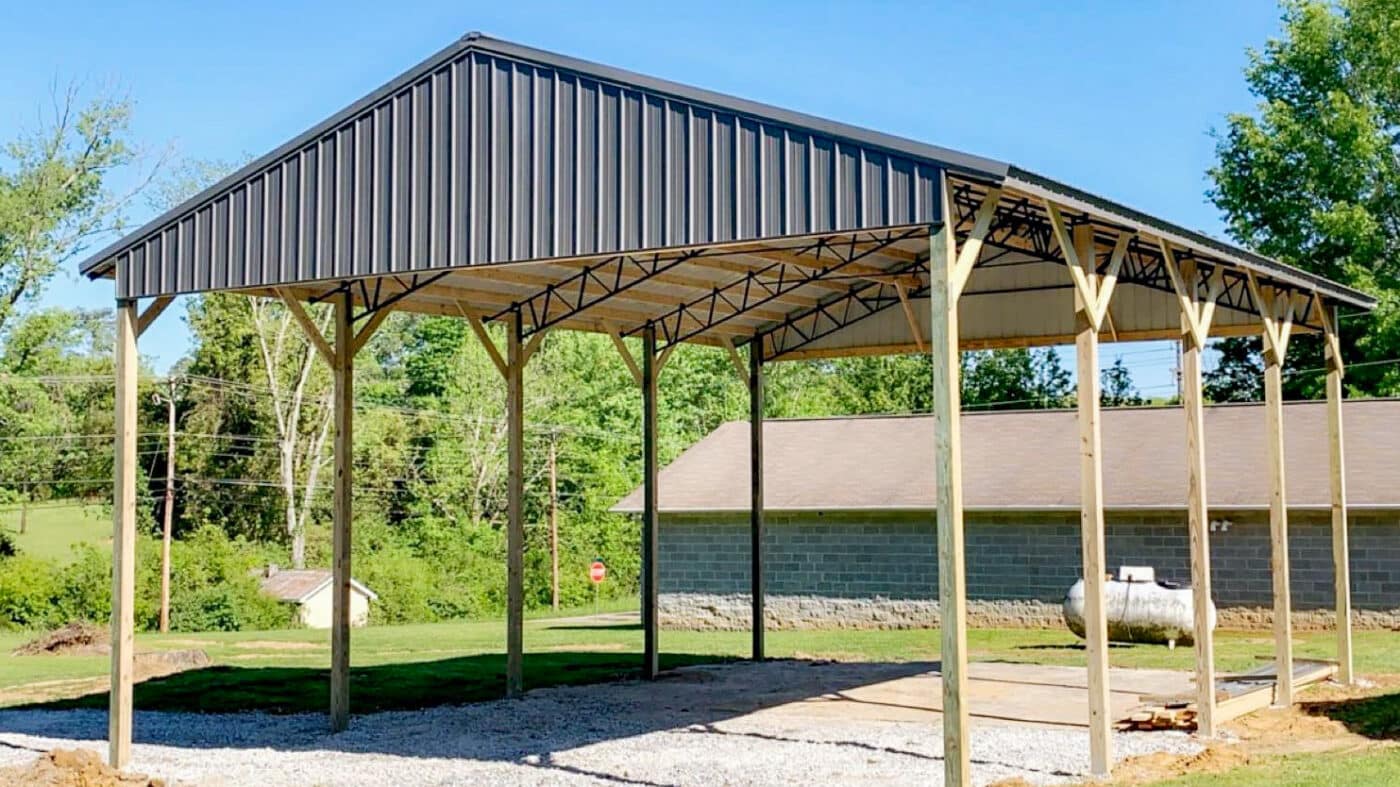
In Conclusion
We hope this article helped you understand pole barns with metal trusses, the benefits, and the various factors you should consider. For more information, check out our article on hybrid pole barns, which feature a metal truss design.
Looking for a pole barn for your own? Here at Troyer Post Buildings, we pride ourselves in building quality pole buildings that are fully customizable through our 3D Builder. Feel free to request a quote or browse our current inventory! If you have any questions, feel free to reach out. We’d love to hear from you!
